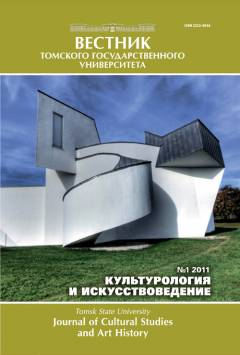Music-performing intonation in the middle ages
The subject of the article are opredeljajushie performance development aspects of intonation in music of the middle ages. The actuality of the research stems from the presence of ambivalence in the trend of historic promotion of art of this period, which contained divergent views of theorists at the problems of musical intonation. On the one hand, this process had a basis in ideological and aesthetic views, which traced the legacy of antiquity in the application affects the manifested a desire to update the musical art of the new, not previously used means of expressiveness. This entailed not only the possibility of expanding the capacity of performing intonation because of consistent merger of Church and secular music, but also cause serious aesthetic themselves change the foundations of art. The primary method of study was theoretical analysis of the ideological concepts of direction and purpose of music presented by adepts of the ecclesiastical and secular music development vectors: A. Medio-lanskogo, K. Alexandria, W. Caesarea, A. Boetius, Guido Aretinskogo, I. Cotton, I. de Murisa and others. In this regard, notes the interpretation of thinkers of divine origin in music, contributing to education "moral structure of the human soul", and shows the nature of innovations in musical performance and trends intonirovanii semiotic interpenetration of structural elements of Church and secular music in the middle ages. Set out examples of the aesthetic principles of the medieval thinkers in evaluation of musical intonation. Presented the perspective of theorists advocating secular precedence (folk) music that reflects the diversity of moods, images and even national characteristics. The study of the subject gives also the base note of brass tools mainly in various genres of secular music that represents certain methodological novelty for the practice of performing these works. Medieval composers already proposed specific ways to diversity in practice, performing musical intonation, not behind the ladovoe basis, as it was embedded in the ancient theory of affections, and the psychological start of the musical performance. Therefore, the result of the momentum of the musical art of the middle ages can be seen as the emergence of new semantics performing intonation that went into practice with the rise of professional secular music, the evolution of genres and musical instruments.
Keywords
григорианский антифонарий, псалмодирование, юбиляция, аффекты, этос, сольмизационные слоги, пастурнели, тенсоны, Gregorian antiphonary, psalmodirovanie, jubiljacija, affects, ethos, sol'mizacionnye syllables, pasturneli, tensonyAuthors
| Name | Organization | |
| Kvashnin Konstantin A. | Nizhny Novgorod State Conservatory M.I. Glinka | kka946@rambler.ru |
References

Music-performing intonation in the middle ages | Tomsk State University Journal of Cultural Studies and Art History. 2018. № 30. DOI: 10.17223/22220836/30/13